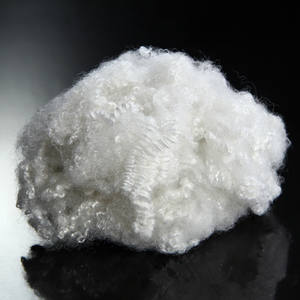Durable and versatile chemical fibers for textiles, composites, and more. Excellent quality, competitive rates, and reliable delivery.
Title: Beyond Thread and Thread: The Surprising Materials Fiber Artists Reject .
(which of the following is not used in works of fiber art?)
Main Product Keywords: Fiber Art.
1. What Exactly Is Fiber Art Anyhow? .
Fiber art sounds basic. People think of knitting or crochet. The fact is a lot more comprehensive. Fiber art utilizes flexible, direct products as its core aspect. Think strings, yarns, ropes, fabrics, even paper or plastic strips. Artists twist, knot, weave, sew, really felt, color, and layer these products. The goal is creating something expressive. This could be a wall surface hanging, a sculpture, wearable art, or a complex setup. It connects craft and fine art. Traditional techniques meet radical trial and error. The focus is on the material’s integral high qualities and the artist’s hand. It’s art made from right stuff that holds things together.
2. Why Do Artists Choose Fiber Over Paint or Stone? .
Fiber uses special opportunities. It really feels responsive and instant. Dealing with fiber connects artists to old customs. There’s a background in every knot and stitch. Yet fiber is likewise extremely flexible and modern. Artists select it for its structure. They love its flexibility, essentially and artistically. Fiber can be soft or stiff, delicate or sturdy. It can flow or hold stiff forms. It usually lugs cultural or individual meaning. Think about the importance of fabric in our lives. Fiber art enables musicians to check out these deep connections. It welcomes touch and close looking. Repaint on canvas is level. Rock is hefty and long-term. Fiber is often dimensional, movable, and lively. It really feels human.
3. Exactly How Do Fiber Artists Transform Simple Strings? .
The magic occurs with numerous strategies. Weaving is essential. Artists make use of impends to intertwine warp and weft strings. This produces material frameworks. Needlework adds stitched patterns onto existing cloth. Surface area layout includes coloring, painting, or printing straight onto material. Weaving and crochet develop forms with loopholes of yarn. Felting entails matting woollen fibers together using dampness, warm, and pressure. Macrame makes use of knotting to produce patterns. Quilting stitches layers of textile with each other. Musicians commonly combine approaches. They could weave a base, then stitch and color it. They could felt wool over a knitted structure. They push products to their restrictions. Often they design entirely brand-new ways to work with fiber. The process is typically sluggish and reflective. Each piece holds hours of focused initiative.
4. Where Do You See Fiber Art Applications Today? .
Fiber art is all over as soon as you look. Galleries and museums showcase it as art. Sculptural items test understandings. Wall hangings bring structure and shade to insides. Wearable art makes fashion statements. Think distinct jackets, dresses, or accessories. Fiber art enhances public rooms. Massive setups transform structures or parks. Think about thread bombing– covering things in public with weaved or crocheted covers. It shows up in theatrical collections and costumes. Designers utilize fiber methods in rugs, tapestries, and upholstery. Fiber art exists in publications as handcrafted paper and bindings. Community jobs commonly utilize fiber for cumulative production. It recovers with art treatment programs. Fiber art enhances and questions. It enhances and prompts thought. Its applications are as varied as the musicians themselves.
5. Fiber Art FAQs: Untangling Common Questions .
(which of the following is not used in works of fiber art?)
Individuals commonly ask what products fiber musicians utilize. The list is large: woollen, cotton, silk, linen, hemp, jute, synthetic strings, cord, plastic, paper, located textiles, also hair. Another question has to do with tools. Impends, needles (knitting, crochet, needlework), hooks, felting devices, color pots, scissors, and simple hands are important. Numerous wonder about the difference between craft and art. The line is blurred. Fiber art highlights principle, innovation, and personal expression over pure energy. A frequent question is about preservation. Fiber is susceptible. Light, pests, and humidity damages it. Correct display and storage space are critical. Museums use unique techniques. Individuals frequently ask if devices are made use of. Handwork is central. Artists value the straight connection to the product. Devices may assist, like a sewing device for signs up with, but the artist’s hand guides whatever. The core continues to be human touch.






